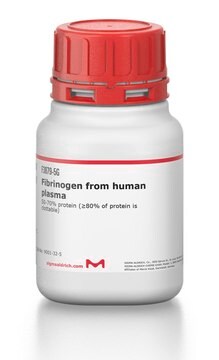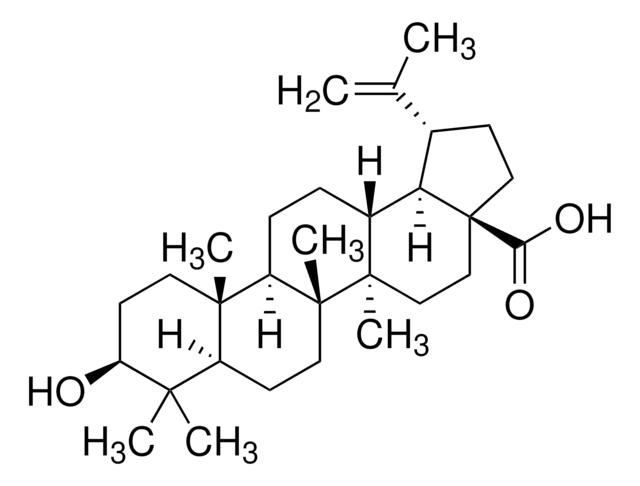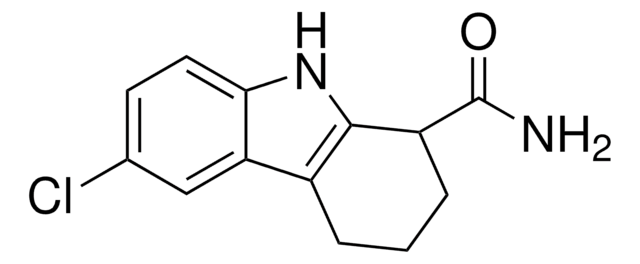SRP4324
Apo-SAA human
recombinant, expressed in E. coli, ≥98% (SDS-PAGE), ≥98% (HPLC)
Synonym(e):
Amyloid fibril protein AA, Amyloid protein A, SAA, SAA1, SAA2, Serum amyloid A protein
About This Item
Empfohlene Produkte
Biologische Quelle
human
Rekombinant
expressed in E. coli
Assay
≥98% (HPLC)
≥98% (SDS-PAGE)
Form
lyophilized
Mol-Gew.
~11.5 kDa
Verpackung
pkg of 50 μg
Lagerbedingungen
avoid repeated freeze/thaw cycles
Methode(n)
protein expression: suitable
Verunreinigungen
endotoxin, tested
NCBI-Hinterlegungsnummer
Versandbedingung
wet ice
Lagertemp.
−20°C
Angaben zum Gen
human ... SAA1(6288)
Allgemeine Beschreibung
Serum amyloid A (SAA) proteins are a group of apolipoproteins produced in response to cytokines released by activated monocytes/macrophages. SAA is a highly conserved acute-phase protein primarily synthesized by the liver.
Anwendung
Biochem./physiol. Wirkung
Physikalische Form
Rekonstituierung
Lagerklassenschlüssel
11 - Combustible Solids
WGK
WGK 3
Flammpunkt (°F)
Not applicable
Flammpunkt (°C)
Not applicable
Hier finden Sie alle aktuellen Versionen:
Analysenzertifikate (COA)
Die passende Version wird nicht angezeigt?
Wenn Sie eine bestimmte Version benötigen, können Sie anhand der Lot- oder Chargennummer nach einem spezifischen Zertifikat suchen.
Besitzen Sie dieses Produkt bereits?
In der Dokumentenbibliothek finden Sie die Dokumentation zu den Produkten, die Sie kürzlich erworben haben.
Unser Team von Wissenschaftlern verfügt über Erfahrung in allen Forschungsbereichen einschließlich Life Science, Materialwissenschaften, chemischer Synthese, Chromatographie, Analytik und vielen mehr..
Setzen Sie sich mit dem technischen Dienst in Verbindung.








